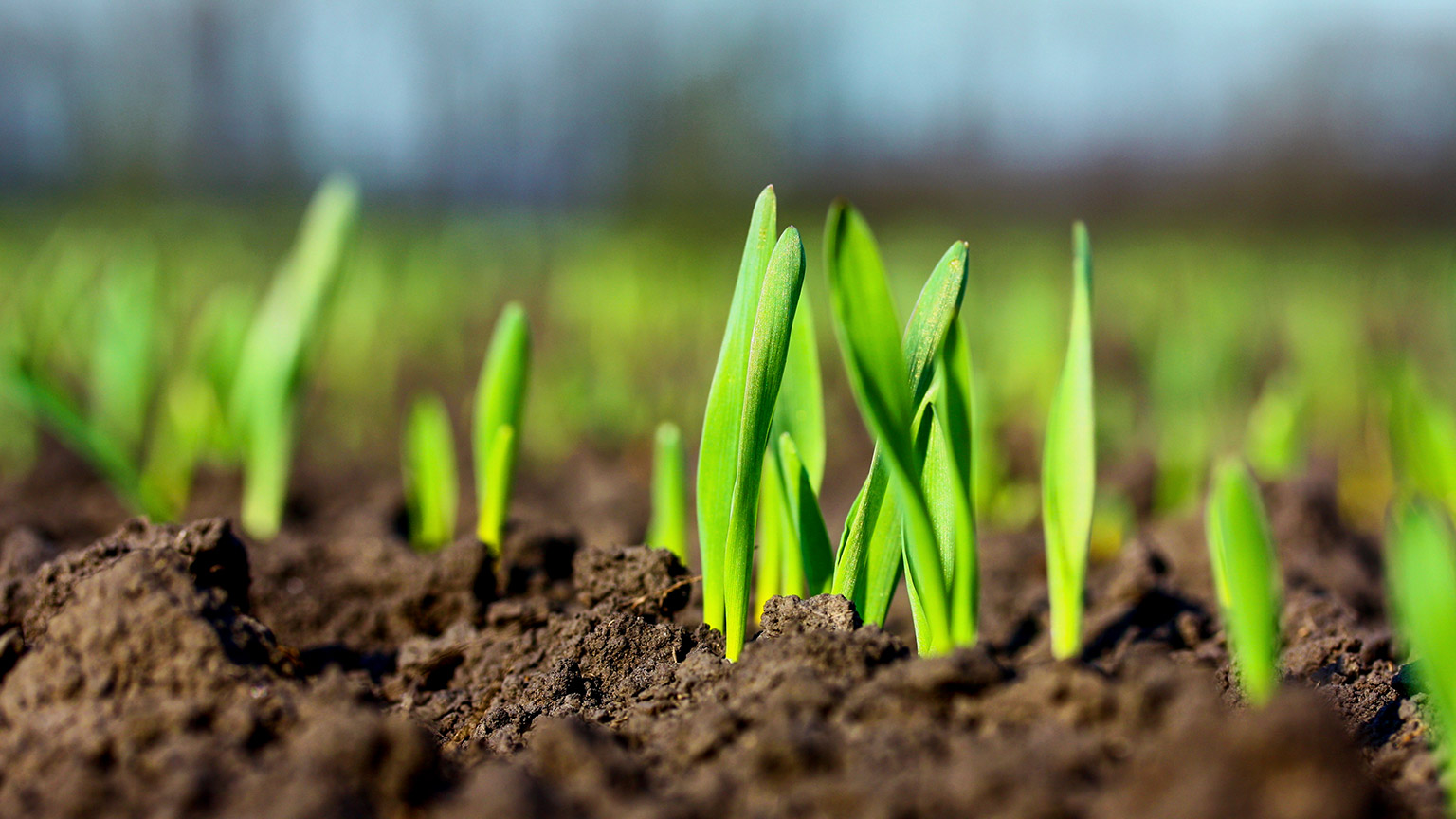Horticulture has a lot to do with plants. So what is a plant anyway?
Plant is a very broad term, and there are many types of plants, so it's important that we have a clear definition of what we mean when we talk about what a plant actually is.
Activity - What we mean by plant
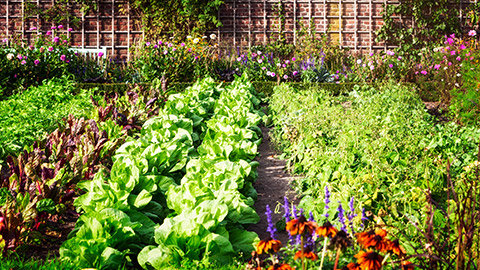
There are many different ways to sort and group similar plants together (called classification). Let’s start with the basics.
The following diagram shows how we can classify plants based on their lifecycle and physical attributes.
- To start, we need to know how long this plant lives for.
- A growing season is the period of the year that a plant is actively growing.
- If it lives for only one growing season or one year, we call it an annual.
- For example – lettuce (Lactuca sativa) grows for between 100 and 170 days before dying off completely.
- If a plant lives for two years or growing seasons, it is called a biennial.
- For example – parsley (Petroselinum crispum), which offers herbaceous leaves its first year and goes to seed the next year.
- If a plant lives for more than two years, it is a tree, shrub, or perennial, depending on it's physical characteristics.
- If the plant lives for three or more years and does have woody stems, stalks or trunks, we call it either a tree or a shrub. Generally, if it’s big, we call it a tree, and if it’s smaller, we call it a shrub.
- If the plant lives for two to three or more years and has soft stems, it is called a perennial. This is how the word perennial is commonly used. It isn't always the case, but for now, when we talk about perennial plants, we mean ones that live for more than three years but don’t have woody stems, stalks, or trunks.
- Next, we can further divide our trees and shrubs category by considering whether the plant loses its leaves in winter or not.
- If they have healthy leaves all year, we call them evergreen trees or shrubs.
- If they lose all their leaves at once each year (usually in winter) we call them deciduous trees or shrubs.
Activity - Turn and learn
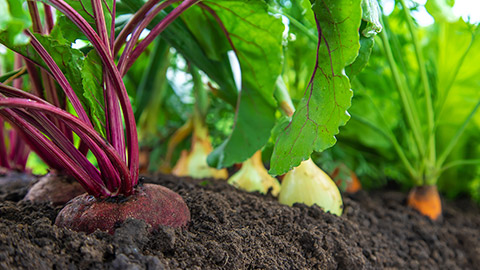
When you are working on your Site Evaluation Project (Assessment 2) you’ll need to take photos of the plants already growing and explain if they are healthy or not. Knowing what plants should look like will help you with this assignment, but it will also help you see problems with your own plants early. This means you’ll probably be able to make them better before it's too late.
Does the plant’s appearance match its lifecycle stage and season?
Sometimes a plant will look unhealthy, but it may be a case of its lifecycle stage. It may be healthy but have no leaves because it is dormant. Dormancy is the stage where there are no visible signs of growth. But just because it's dormant doesn’t mean it’s unhealthy.
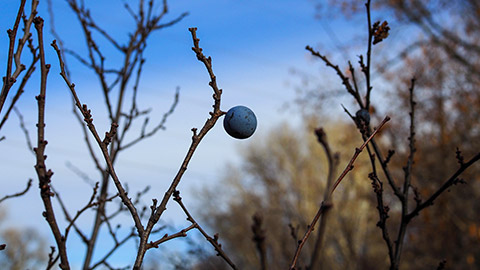
For example, a plum tree (Prunus domestica) will have no leaves in winter, but it will still be alive. In fact, it will be sending energy down to its roots to help them grow.
There are a few ways to check if a tree is dormant or dead. A simple one is to bend a small branch. If it bends easily, water is still inside, so it is probably dormant. If it snaps and the wood is hard and dry, that part of the tree is dead.
Another way to check is to scrape off a small piece of bark from a branch. If the layer underneath is green, then the plant is still alive. If it is brown or grey and there is no moisture, that part of the tree is dead.
You may need to look up the plant online and see what the stages of its lifecycle are.
As a novice gardener, you may come along a patch of potatoes (Solanum tuberosum) that have yellow leaves and stems that are starting to turn brown. You might think it’s unhealthy. You would be right, but it may be unhealthy because it’s an annual and has reached the end of its single growing season and is now dying back. The amount of foliage likely indicates they have grown well right to the end of their lives.
The plight of the potato plant (Solanum tuberosum)
Take a look at a healthy potato patch, with flowers in bloom.
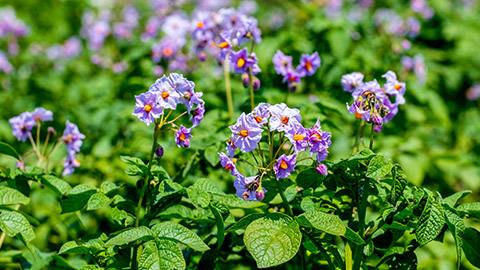
Now, look closely at this patch of potatoes. The flowers have all died away, and the foliage is turning yellow.
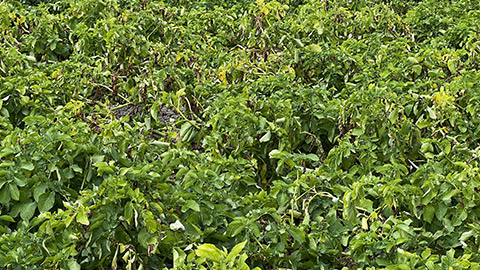
This plant is near the end of its life, and the signs of it being unhealthy would be misunderstood if you were unaware of the correct stage for the plant and season.
Knowing when to expect dieback is important to distinguish the natural lifecycle from disease.
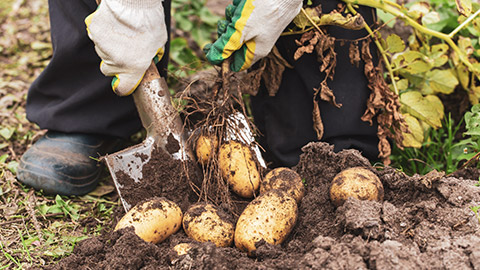
Waiting until the potato plant dies back is the right time to harvest the bounty under the soil — though some gardeners in New Zealand will gently lift a few from the ground around the holidays, without disturbing the plant too much, if the variety has not yet completed its lifecycle. When potatoes are still small, with their skins unset, they are called "new potatoes."
Pests and plant health
Healthy plants have no pests or diseases, or at least, they have so few of them that they don’t cause health problems for the plants. Pests on plants are usually a sign of poor health.
If you suspect your plant isn't doing well, look for visible signs of pests on or near the plant. Pests may be insects, but they can also be larger animals, such as rabbits, hares or possums, which usually cause damage at night.
On the other hand, sometimes you may see pests, but the plant is actually healthy. For instance, there may be a lot of large willow bark aphids (Tuberolachnus salignus) on a willow tree (Salix sp.), but the tree itself may be healthy. These aphids have no negative effect on this plant's health.
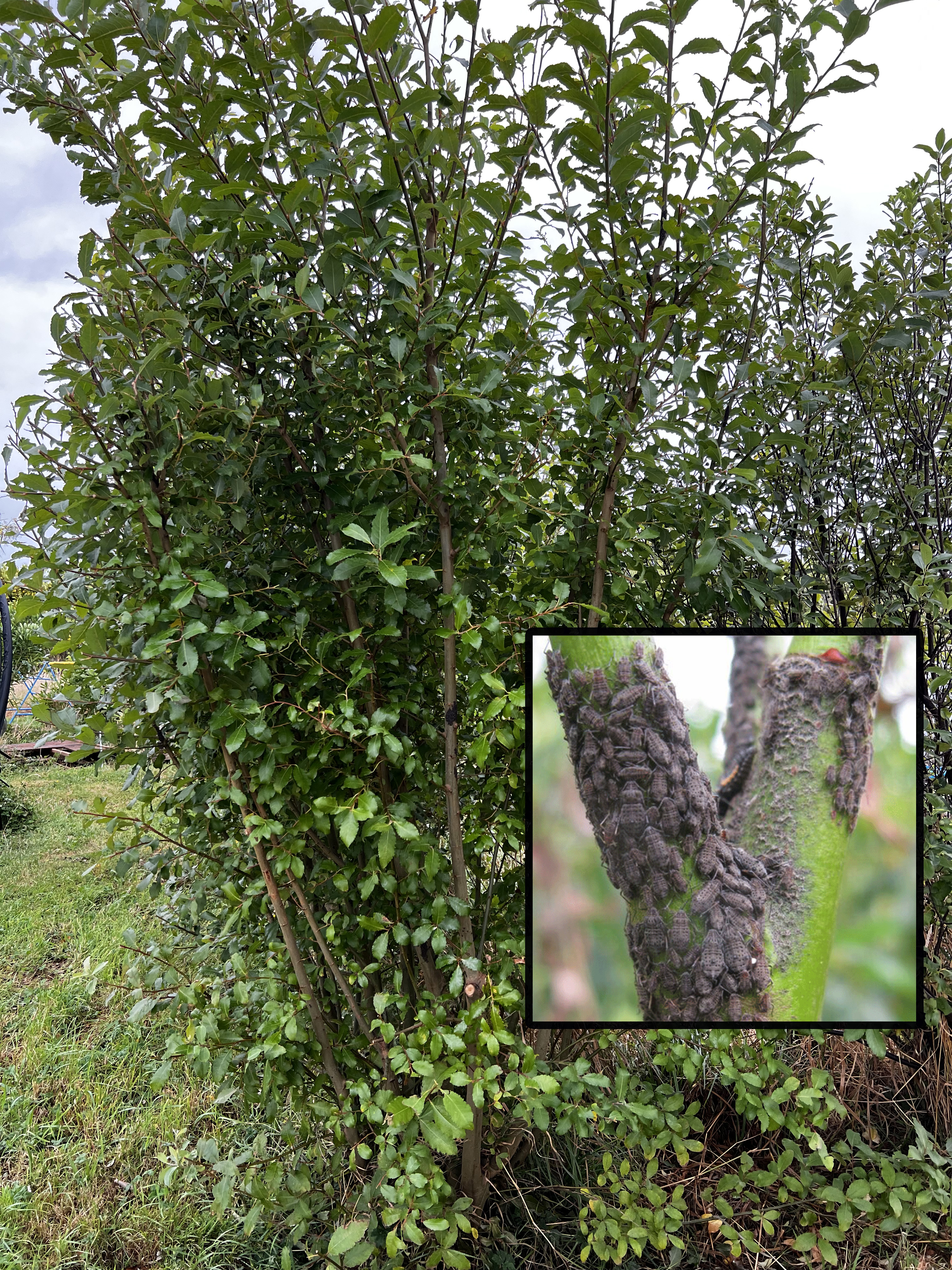
A willow tree with a colony of large willow bark aphids (Tuberolachnus salignus) (insert). You can see that the leaves are a vibrant green and the stems/branches are firm and upright. The plant appears to be in good health despite the insects living on it.
Check for pest damage
Since insects are so small, you may only see the damage they have caused rather than the actual pest. They can damage plants by either chewing the leaves or stem or sucking their sap.
| Chew marks |  |
Chew marks on the leaves of this nasturtium (Tropaeolum majus) tell us that pests are feeding on this plant. The yellowing of the leaves shows that the damage is causing health problems for the plant. |
| Signs of chewing from a larger pest (a rabbit) | Larger pests leave more obvious chewing damage and may require physical barriers to prevent further problems. Learn more on the DOC website about the impact of rabbits in New Zealand. | |
| Suck marks | (You cannot see suck marks well enough to use them to diagnose the problem.) | Suck marks are much more difficult to find. More likely, you’ll find that leaves are discoloured or sticky. |
| Sticky Residue |  |
This sticky stuff is called honeydew and is a sugary liquid that is released by pest insects when they drink plant sap. In some cases, black sooty mould forms on the sticky surfaces. |
| Visible pests and/or eggs |  |
This shows white wax, eggs and adult Mahoe whitefly on the underside of a leaf of Māhoe. |
By keeping an eye on your plants, you will be able to catch pests before they cause too much damage. We'll go over how to manage the problem in a later section.
If it's not a pest, could it be a disease or disorder?
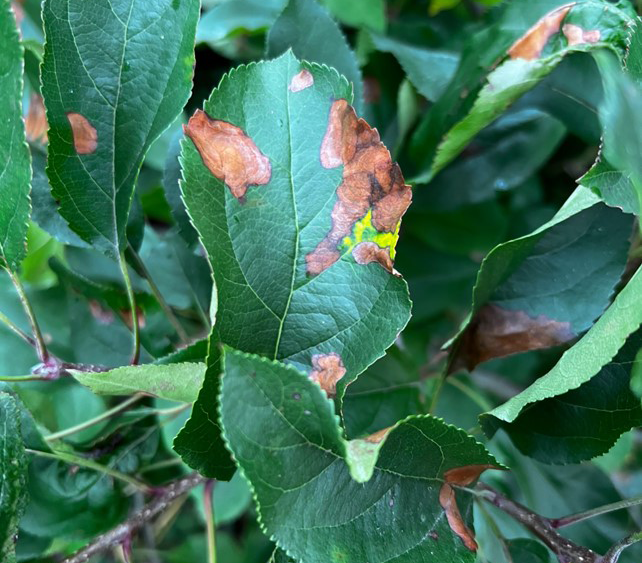
Disease damage on the leaves of an apple tree (Malus domestica sp.)
When leaves are discoloured or deformed, and there are no signs of pest damage, the damage is probably caused by a disease or disorder.
Plant Disease: when microorganisms attack a plant and stop it from growing to its full potential. The microorganisms may be bacteria, viruses, fungi or other types.
Plant Disorder: when the plant is getting too much or not enough of something it needs and this is making it unhealthy. For example, healthy plants of most species have firm leaves and stems.
If a plant is wilting, such as the plant on the left, in the photo below, it is most likely due to a lack of water – this is a disorder. Alternatively, it could be due to a type of wilting disease, which disrupts the flow of water from the roots to the leaves.

The strawberry plant on the left is healthy — it has firm upright leaves that are flat and glossy. The same plant on the right is not healthy — the leaves are droopy and somewhat dull — though may just need a bit of water to perk it back up.
Because it can be hard to work out what is a disease and what is a disorder, for our purposes, when we talk about diseases, we mean both diseases and disorders.
The table of images below shows crops that are grown for food in New Zealand. It can sometimes be difficult to spot and diagnose plant pests and diseases, however, if the problem shows up on the fruit, it is much easier to see — as you can tell by the first four plants shown below.
| Plant | Healthy | Unhealthy | Comment |
|---|---|---|---|
| Apples |  |
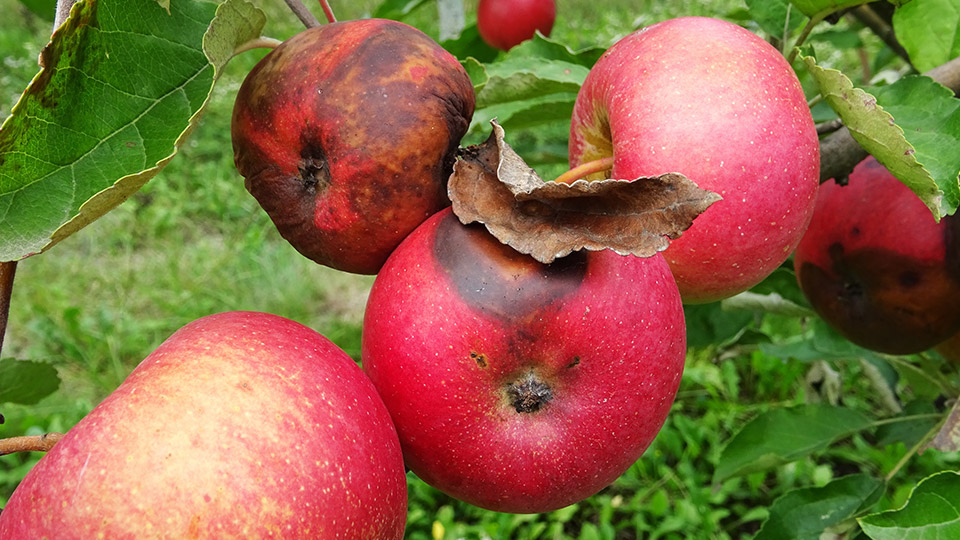 |
It appears this apple has been damaged by a fungal disease. |
| Apricots |  |
 |
The brown spots on the fruit could be a fungus or virus. |
| Capsicums | 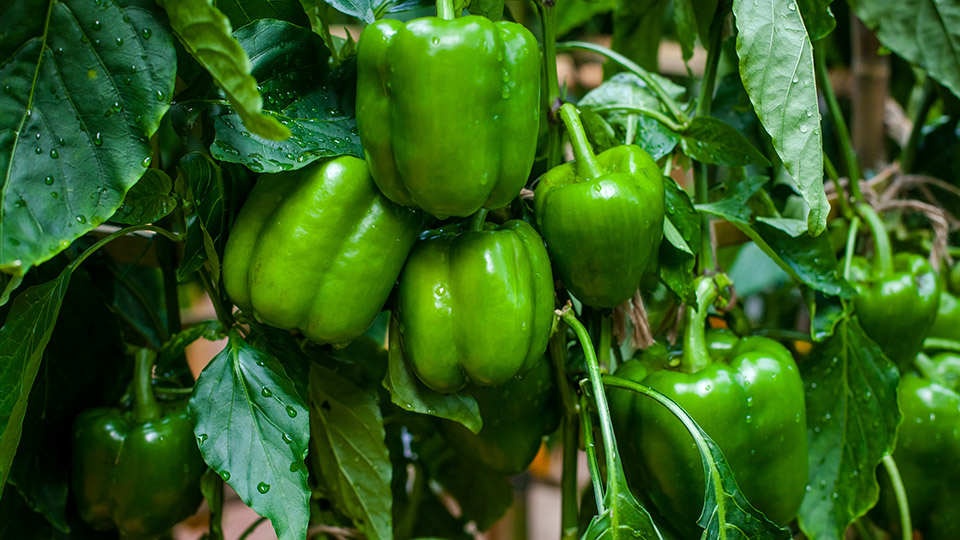 |
 |
The misshapen leaves, and small fruit indicate disease. |
| Carrots | 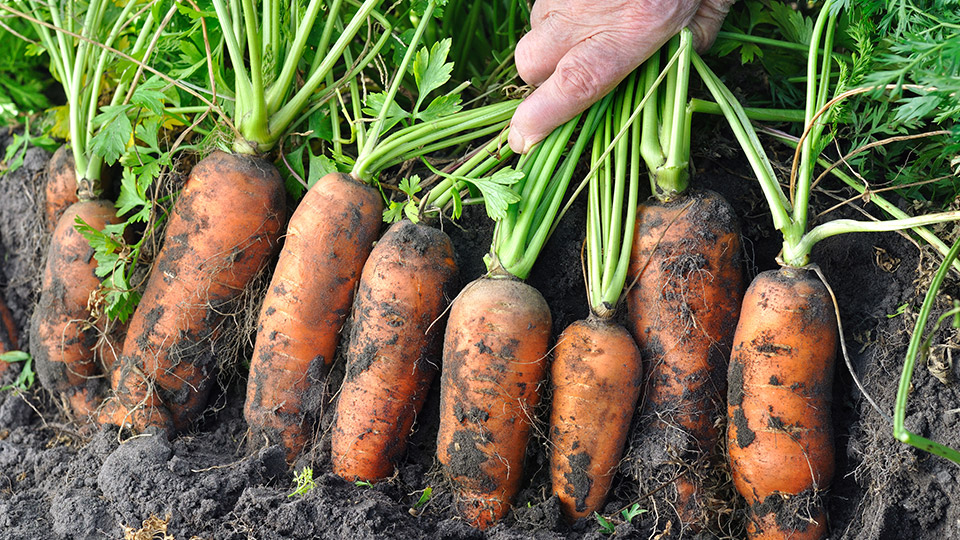 |
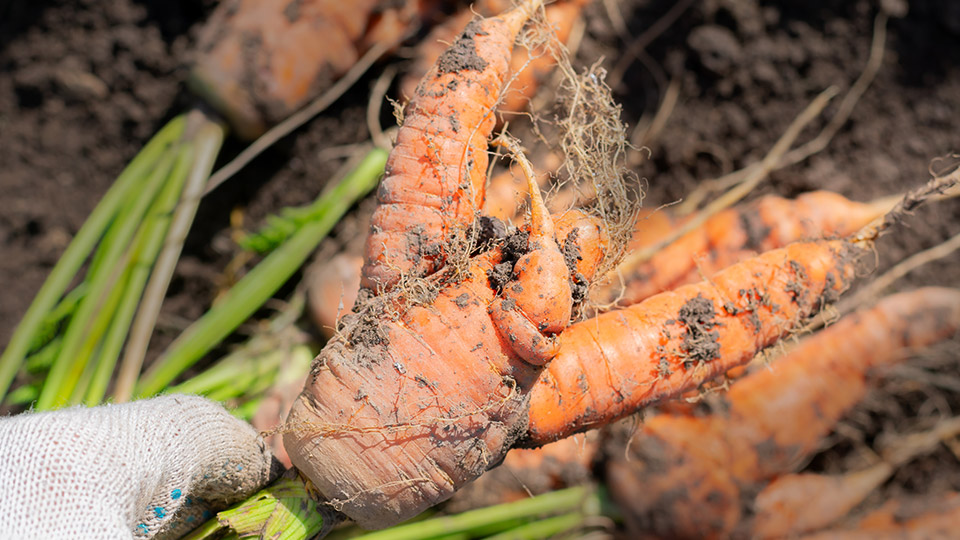 |
The deformed carrot with crooked and twisted roots may indicate insufficient nutrients in the soil. Could also be nemotodes (roundworm). |
| Grapes |  |
 |
This grape leaf shows signs of downy mildew, a moldy plaque. |
| Kumera |  |
 |
The purple marks on the leaves suggest a disease such as sweet potato feathery mottle virus. |
| Taro | 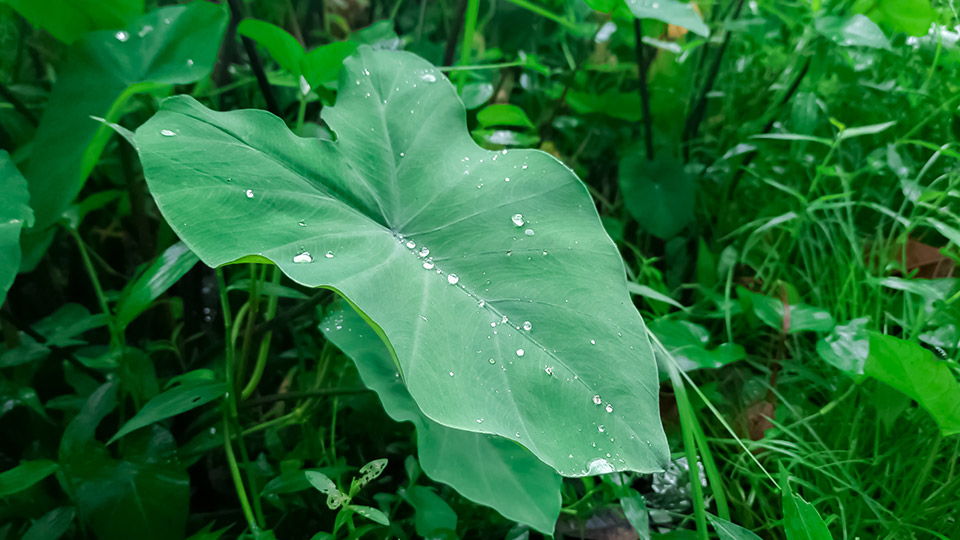 |
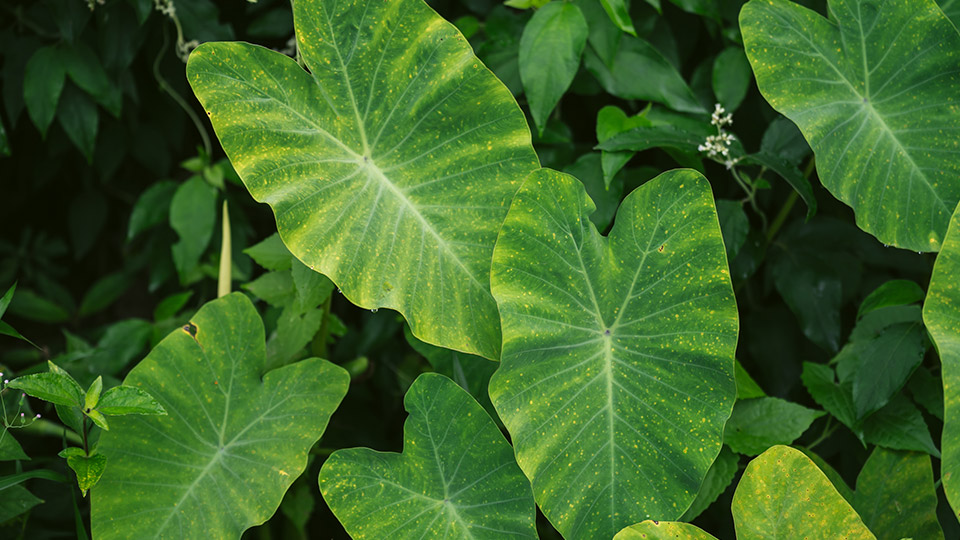 |
The yellowing of the leaves indicates the plant is unhealthy. We'll need to investigate to find out more. |
